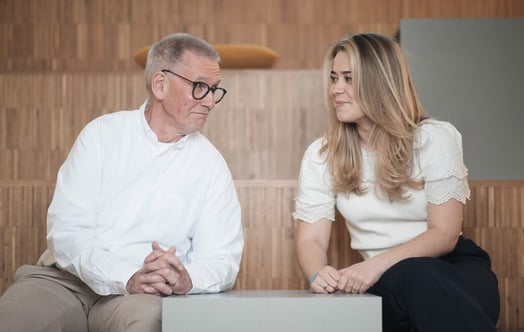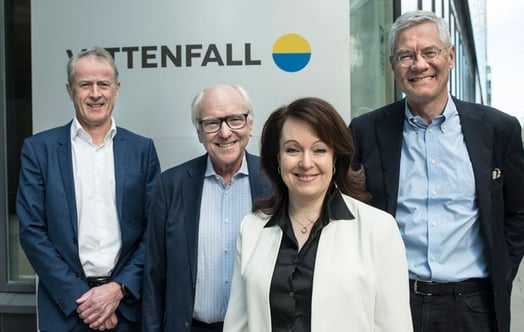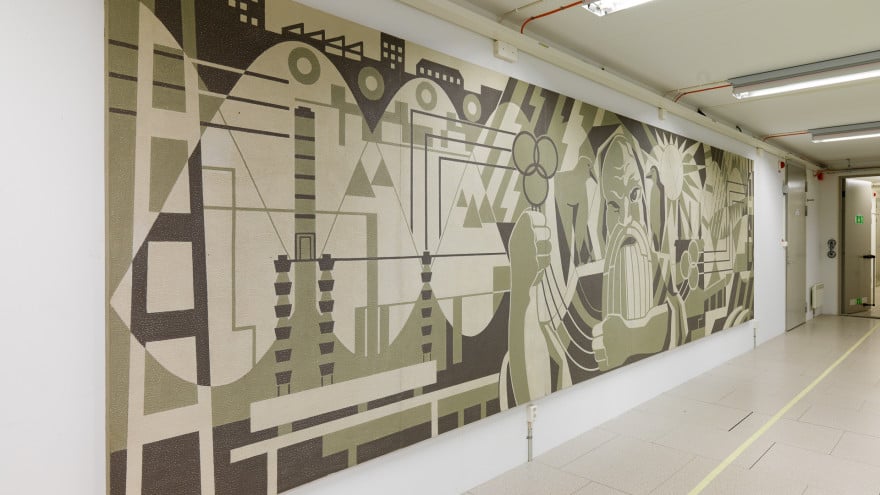
Ebbe Berg – Vattenfall's own artist
For a total of over 30 years, Ebbe Berg worked with a free rein and an artistic spirit to decorate the walls of hydro power plants around Sweden.
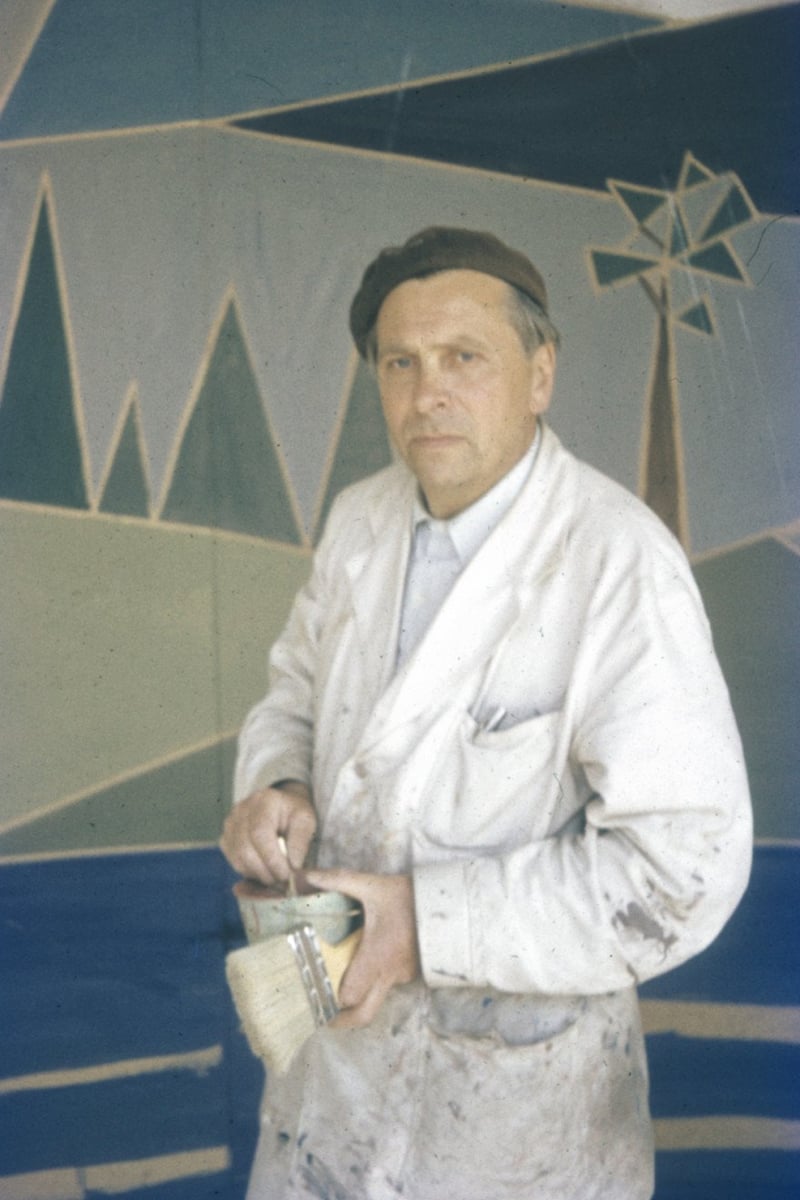
Berg in Kilforsen in 1954. Year: 1954 | Place: Kilforsen | Creator: Vattenfall | ID: VF400002
Ebbe Valter Berg was born in March 1896. He was the eldest of five children, and grew up in simple conditions. His father, Martin Möller-Berg, was a foreman at the Höganäs company's coal mine in Billesholm.
At the age of 17, Berg moved to Stockholm and got a job as an assistant draughtsman in Vattenfall's power plant office. In 1924 he left to start his own advertising agency, with an office on Hökensgatan. At the same time as running his business, Berg studied under Isaac Grünewald and Otte Sköld at the Royal Swedish Academy of Fine Arts. He married his wife Vega and they started a family. For many years they lived in a flat on Högbergsgatan on Södermalm.
In 1939 Berg wound up his company and returned to Vattenfall. The times were troubled, and the life of an entrepreneur was an uncertain one. At first he worked as a draughtsman and engineer at Elektrobyggnadsbyrån, where he made models and perspective drawings. Later he took on a freer, more independent role.
Berg was known for his productivity, and created large numbers of illustrations, brochures and posters. He also had several exhibitions, including the 'Atom exhibition', which toured around the country, 'Swedish industry and research' in New Delhi and 'The river district' in Trollhättan.
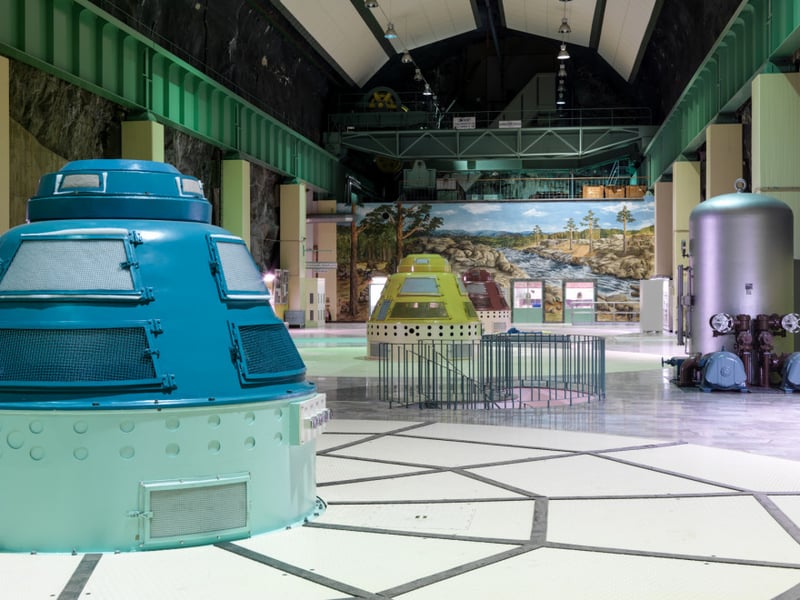
The machine house in Kilforsen power plant, one of many power plants constructed after the Second World War. Year: - | Place: Kilforsen | Creator: Henrik von Klopp | ID: VF400003
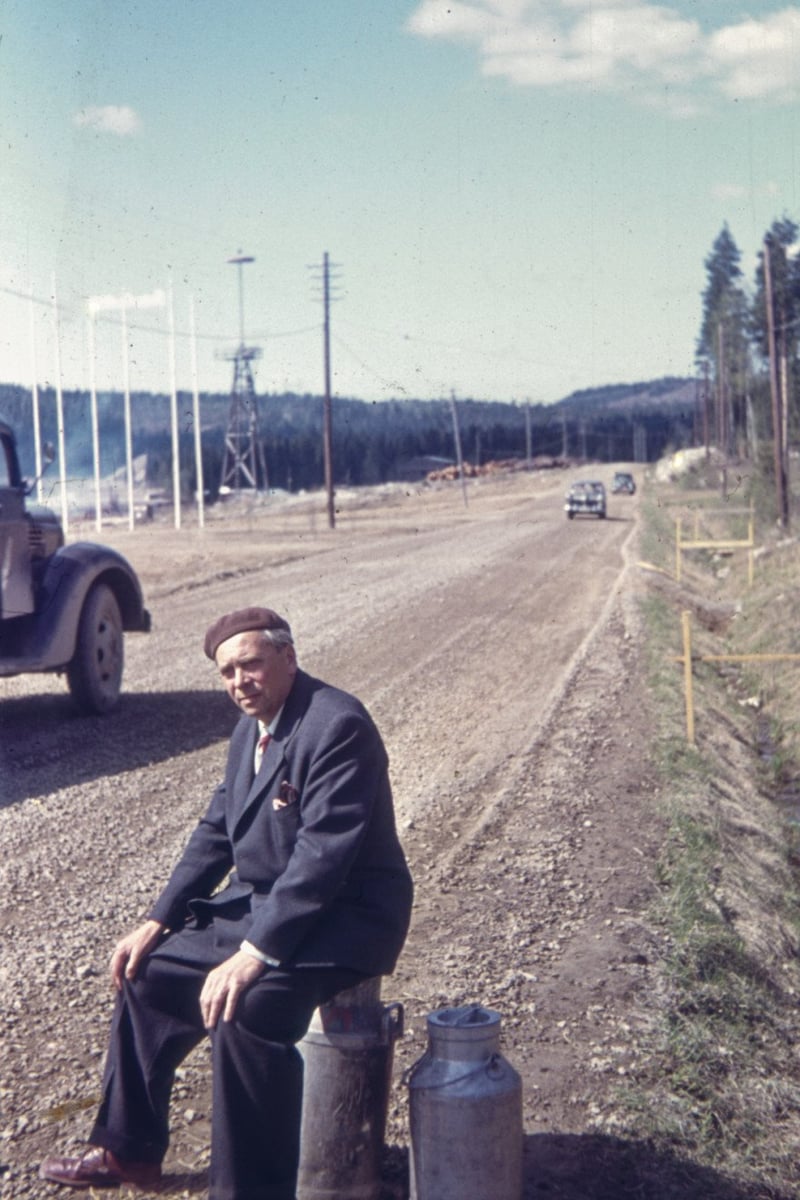
Berg photographed at a construction site (probably Kilforsen). Year: 1954 | Place: Kilforsen | Creator: Vattenfall | ID: VF400004
But it was for his large murals that Berg became best known. Up to the 1960s, the power sector still used its plants as shop windows, and it was common to engage renowned artists to decorate entrance halls and conference rooms.
What made Berg unique was the large number of his paintings, their high quality and the fact that they were produced over such a long period.To simplify a little, the paintings can be divided into three types. The simplest ones represent various views of the plants, based on drawings. The example below shows Hojum power plant, and is in Vattenfall's office building at the Olidan station in Trollhättan.
Elsewhere he added more artistic details, as in the painting from the privately-owned Hammarforsen power plant on the Indalsälv River. The focus is still on the strictly technical aspects, but the paintings of the actual plant are surrounded by motifs from the construction site, such as reinforcing and scrapping.
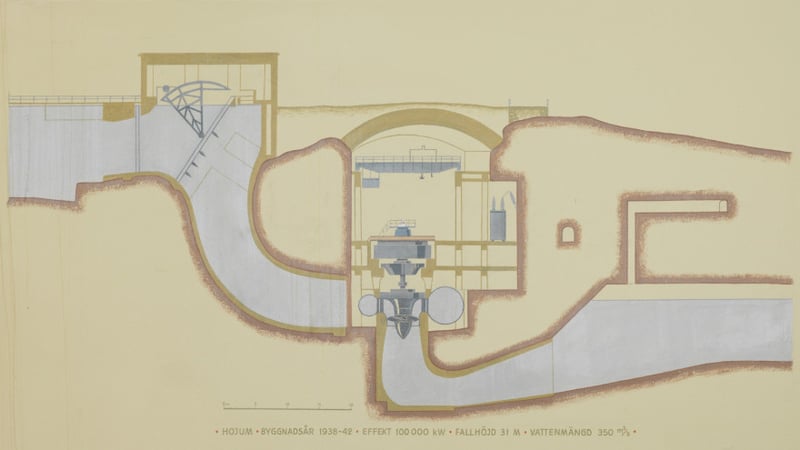
Mural of cross-section of Hojum station. Year: 1959 | Place: Hojum | Creator: Henrik von Klopp | ID: VF400005
In some plants he also produced pure works of art, often inspired by the plant's operation or surroundings. One example is the six-metre-wide painting from the 380 kV switchgear in Odensvi. In the centre of the painting is Odin (source of the name Odensvi), holding together the three-phase transmission between Harsprånget and the Bergslagen industrial district while his two messenger ravens Hugin and Munin watch over the process.
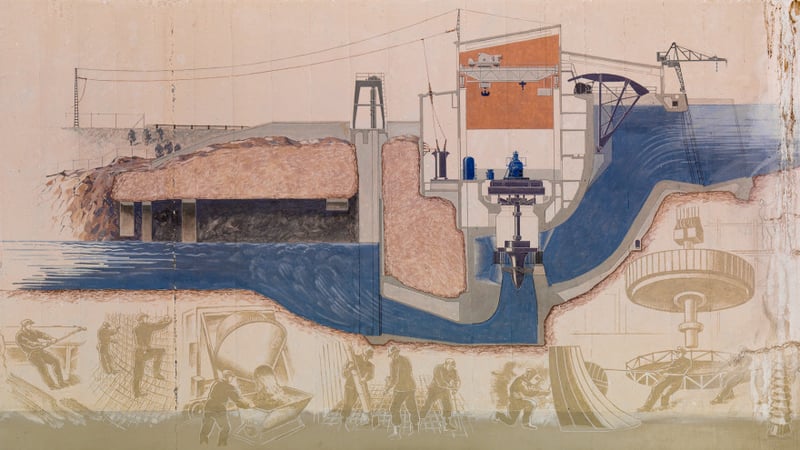
Part of the six-metre-wide mural in Hammarforsen power plant. Year: 1951 | Place: Hammarforsen | Creator: Henrik von Klopp | ID: VF400006
The mixture of the artistic and the strictly technical is perhaps the most characteristic feature of Berg's painting. Before he retired in 1962, he was interviewed in Vattenfall's staff magazine 'Vi i Vattenfall' and said: "Grünewald was a generous, charming gentleman. We understood each other well, even if I was a little more realistic."

Artwork in Odensvi switchgear Year: 1960 | ID: VF400001


